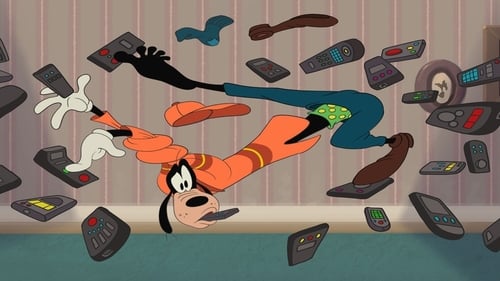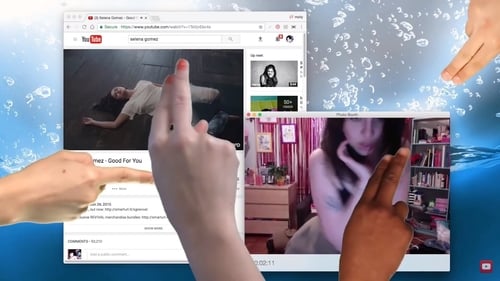Hotel Shakespeare (2016)
Género :
Tiempo de ejecución : 14M
Director : UMMMI.
Sinopsis
Video installation by UMMMI.

Christian, mánager de un museo de arte contemporáneo, se encarga de una exhibición titulada "The Square" en la que hay una instalación que fomenta valores humanos y altruistas. Cuando contrata a una agencia de relaciones públicas para difundir el evento, la publicidad produce malestar en el público.

Documental sobre Andy Goldsworthy, un artista que hace esculturas con los elementos de la naturaleza. (FILMAFFINITY)

Each pixel is separated like an exploded screen, set in a chaotic way into the space. The video has a whole movement in the room, as one three dimensional image. The experience resembles the brain, working with electromagnetic waves and low voltage information.

Goofy intenta configurar su nuevo sistema de cine en casa para poder ver el partido y consigue resultados desastrosos.

2 Small Channel Video Installation, featuring a monologue excerpted from an untitled novel by Alissa Bennett

An installation containing video files of the artist's persona, alongside a karaoke piece of her as she watches her viewership fall and two mirrors side by side of messages she received, from two different users online.

Bass takes over the upstairs Kanter-McCormick Gallery at the Art Center, expanding the territory of her gothic world in a new work The Latest Sun is Sinking Fast, an immersive, multi-channel installation incorporating 16mm film/video, sound, architecture, and featuring performances by Sarah Stambaugh, Bryan Saner, and Matthew Goulish. The solo exhibition features a spatial narrative installation that delves, through movement, texture, sound, and gesture, into the psychology of a recurring figure in Bass' previous films; while also introducing two new characters, blending the past into the present. Bass has designed the installation by altering the gallery, leading the viewer through a evocative memory of place, embedding us in a timeless society of lost souls in a haunted landscape. -Allison Peters Quinn, Exhibition Director, Hyde Park Art Center

REkOGNIZE is a three-channel video installation and a meditation on photography, memory, and movement. Artist and Academy Award-nominated cinematographer Bradford Young (Selma, Arrival) finds inspiration in Pittsburgh’s Hill District neighborhood, a site of the early 20th-century Great Migration. During this time, millions of African Americans moved from the rural southern United States to cities in the north and west. The Hill District saw a flourishing of culture during these years and was a site of artistic development for luminaries such as August Wilson, Charles “Teenie” Harris, Errol Garner, and many others. REkOGNIZE takes its visual cues from the Pittsburgh landscape, especially the city’s tunnels, which serve not only as literal entry points into the city, but also as metaphors for this movement of people and culture.

Silicon Sights is an abstract exploration of the physical spaces and their digital replicas. Protagonist residing on both sides, equipped with a camera as a tool to traverse the wall, can explore and reflect on these seemingly different, yet related environments. A unique trait of the device is established and the video utilizes this ability to construct a fictional narrative. Contemplating resource use by the two sides of the border and putting forward an equation. Equation of pollution, render times, and beautiful simulated nature. The meta-human entities on the digital side are left to dream of a better future, a "post-representational paradise". The viewer is invited to observe the border from a comfortable and involving perspective in the physical installation.

Nearly devoid of editing resources, the videos feature single shots of anonymous people in daily life, subtly revealed/highlighted through zooming. Instead of uncovering reality, though, the videos end up turning it into pure invention. The “videorhizomes” are not limited to production and screening in regular, traditional circuits. The process includes sending the videos to a person that is randomly chosen from the phone book.

Philipp Fleischmann develops special cameras designed to formulate specific relations between the material of the footage (16 or 35 mm film) and the object of the recording. For instance, in his 2013 project “Main Hall,” he deconstructs the main exhibition hall of the Viennese Secession, filming the exhibition architecture with 19 individual cameras and thus creating images that show the view of the exhibition space onto itself. Fleischmann’s recent work, “Untitled (Generali Foundation Vienna)" identifies the film camera as a spacial object-form by itself. Correlating with the history of artistic interventions on site, the object is placed in the former exhibition space of the Generali Foundation at Wiedner Hauptstrasse 15, Vienna, and provided with a cinematographic view.

Wang’s work investigates the ways in which sound and listening can play pivotal roles in shaping social space. For Music While We Work, Wang assembled a group of retired workers from a Taiwanese sugar refinery in the small industrial town of her childhood. She and her collaborator, the political activist and composer Chen Bo-Wei (Taiwanese, born 1971), led a series of recording workshops for the retirees and their spouses. They then returned to the factory, where Wang asked them to “paint a world composed by their listening.”

This three-channel video installation by James Benning shows three scenes from David Wark Griffith’s The Birth of a Nation (1915). The two-minute-long screen arrangement of imperceptibly moving images alludes to the beginning of racism. The three screens each show a solider in the American Civil War, black slaves picking cotton in the field, and imposing KKK.

An experimental installation inspired by the shot and reverse shot, one of the basics methodologies of cinema. The audiences follow the path designed by Jang to see the images, and simultaneously they are also recorded by a hidden camera in the reverse angle. This embodies the concept “gaze of gaze.” The film was shot in three different places to capture the atmosphere of DMZ. The installation consists of two-channel projections, CCTV cameras, and objects representing the DMZ.

Past and present life in the anarchistic "free city" of Christiania, in Copenhagen, Denmark. In Sandra of the Tuliphouse or How to Live in Free State, Christiania is approached at face-value, as a self-described laboratory of freedom, an environment that provides an almost unparalleled opportunity to unravel a very particular history of markedly contrasting power relations and vivid social forces. Borrowing from the usually dispirit practices of cultural geography and fictional narrative the project is constructed as a visual, spatial, and aural investigation of the site. The situation at Christiania in 2001 is compared with its distant past as a military base, its more recent utopian regeneration, and its possible future.

1-channel film installation (21‘20‘‘). 2.00:1 aspherical widescreen, stereophonic sound. A wife waits for her dead husband. An adaption of three japanese poems in three different translations. An examination of waiting and the slowness of time. An exercise in slow cinema.

Three-channel video (black and white and color, three-channel sound) commissioned by the Museum of Modern Art, New York, for the entrance to exhibition "Toward a Concrete Utopia: Architecture in Yugoslavia, 1948–1980".

Based on an installation by Alberto vev

By becoming aware of an idea that is new to us, we talk about it all the time. And beyond that, all the subjects that we approach, we approach them through this new prism. We are going as far as proselytism - essentially to convince ourselves. We repeat the same words, slightly reformulated, until we are convinced. It is a way of swallowing our conditioning to this idea, while hinting that we are already sure. In politics or in love. We repeat ourselves. We repeat ourselves. We repeat ourselves.

Ilya Kabakov is considered one of the most important contemporary artists worldwide. Born and raised in the Ukraine in the period between Stalin and Gorbatschow he left the country in the 80s. In his Installations and his numerous paintings Kabakov creates a world of its own, which leaves the heaviness of socialist and post-socialist life far behind. The film links Ilya Kabakovs artistic spaces with insights into Russian everyday life, which itself sometimes appears like an installation by the artist.


















